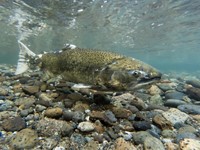Advertisement
Grab your lab coat. Let's get started
Welcome!
Welcome!
Create an account below to get 6 C&EN articles per month, receive newsletters and more - all free.
It seems this is your first time logging in online. Please enter the following information to continue.
As an ACS member you automatically get access to this site. All we need is few more details to create your reading experience.
Not you? Sign in with a different account.
Not you? Sign in with a different account.
ERROR 1
ERROR 1
ERROR 2
ERROR 2
ERROR 2
ERROR 2
ERROR 2
Password and Confirm password must match.
If you have an ACS member number, please enter it here so we can link this account to your membership. (optional)
ERROR 2
ACS values your privacy. By submitting your information, you are gaining access to C&EN and subscribing to our weekly newsletter. We use the information you provide to make your reading experience better, and we will never sell your data to third party members.
Pesticides
US EPA seeks to protect salmon from 4 pesticides
New measures aim to reduce spray drift and runoff into water
by Britt E. Erickson
February 2, 2023

The US Environmental Protection Agency has put restrictions on four pesticides to save endangered Pacific salmon and steelhead species from extinction. The new mitigation measures, announced Feb. 1, aim to protect 28 salmon species in Washington, Oregon, and California from pesticide runoff and spray drift.
The four targeted pesticides are three herbicides—bromoxynil, prometryn, and metolachlor—and the soil fumigant 1,3-dichloropropene. The EPA put the measures in place after the National Marine Fisheries Service found in 2021 that such restrictions are needed to protect endangered and threatened salmon species.
The measures require no-spray vegetative buffers between waters where salmon live and agricultural fields. They also require retention ponds and vegetated drainage ditches. All of these measures are intended to capture pesticides that otherwise could seep into the water.
Environmental groups, which have been suing the EPA for decades to protect endangered species from pesticides, say the new restrictions are long overdue. “But there are still more than 1,000 species that don’t have any protection against these four pesticides or hundreds of others that are devastating to imperiled species,” Lori Ann Burd, environmental health program director at the Center for Biological Diversity, says in a statement. “The EPA needs to move quickly to ensure all species are protected from pesticides, before it’s too late.”
Last year, the EPA implemented similar restrictions on three organophosphate insecticides—chlorpyrifos, diazinon, and malathion—to protect endangered and threatened salmon. The agency is still evaluating the potential effects of dozens of other pesticides on these species as part of legal settlements with environmental groups.





Join the conversation
Contact the reporter
Submit a Letter to the Editor for publication
Engage with us on Twitter